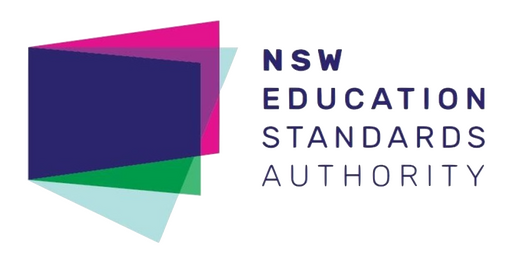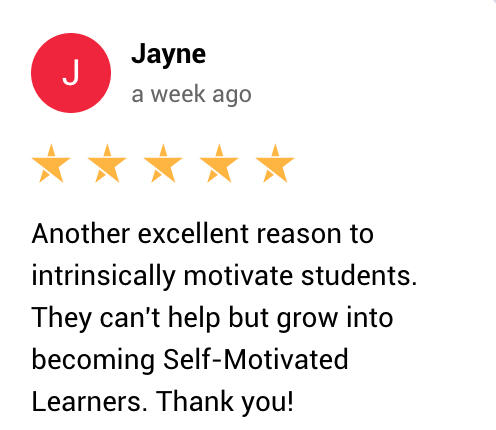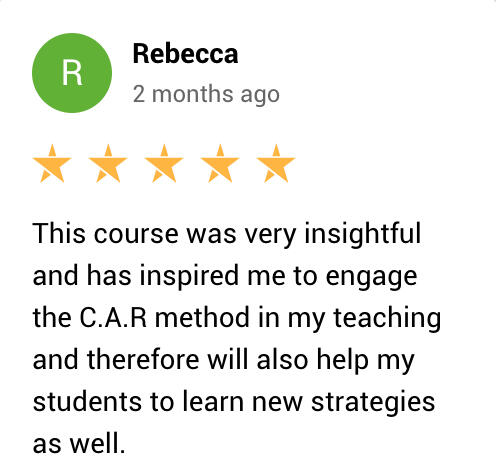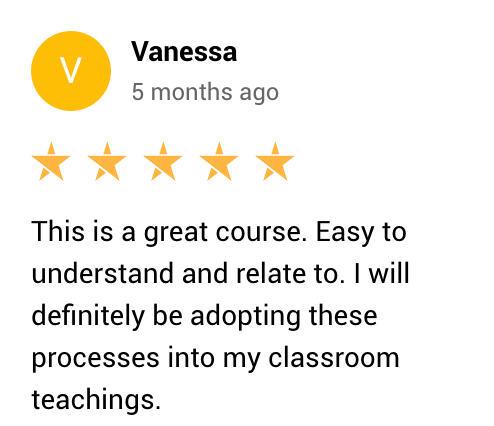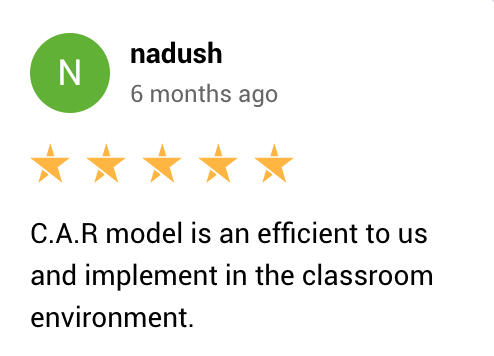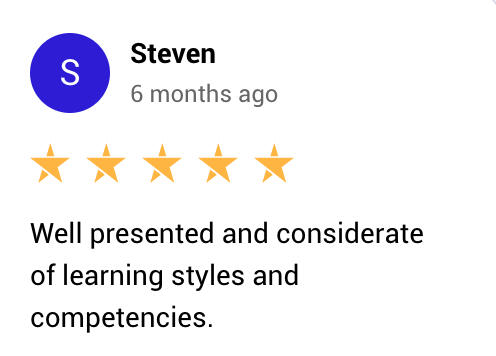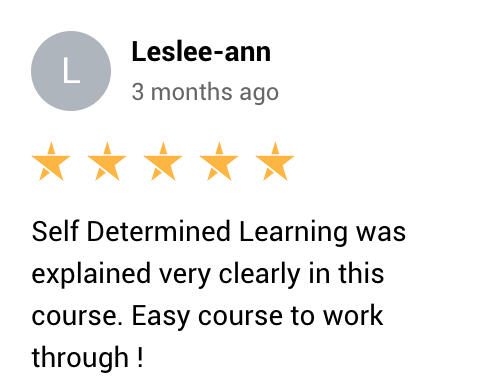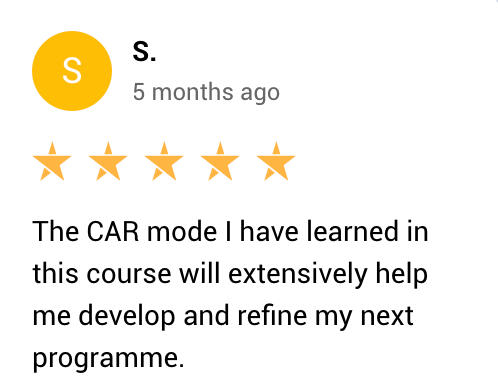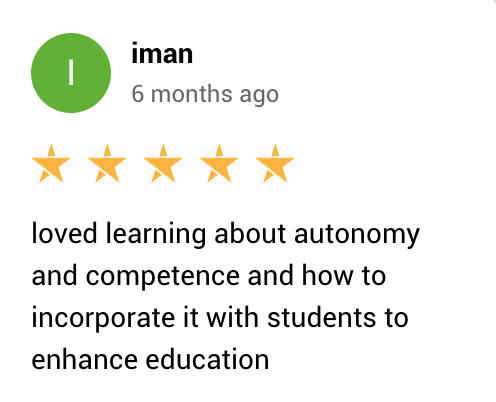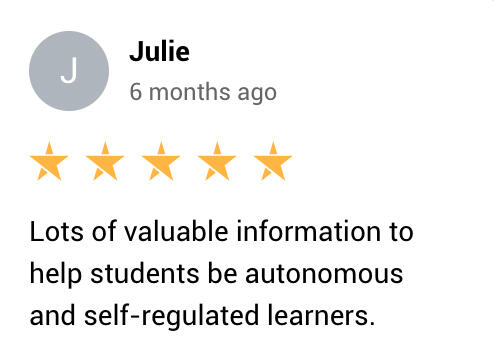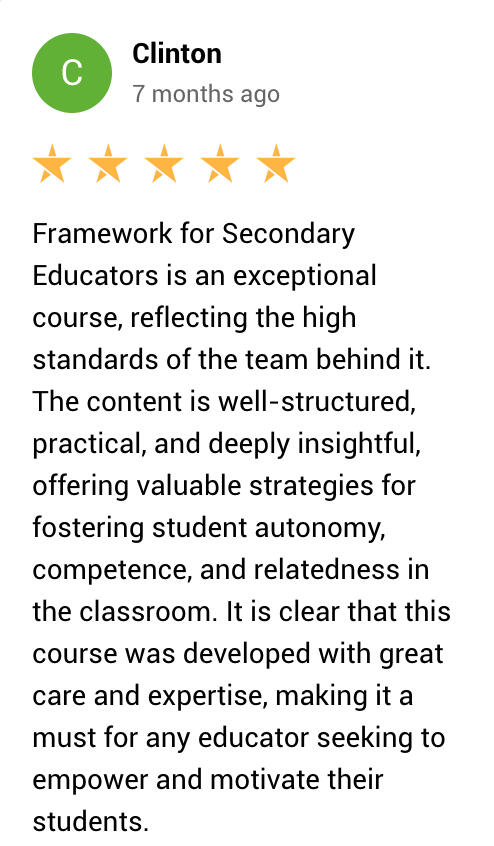the teaching game

Specialist P.D.
in classroom motivation
Scroll down to get started.

What is the Teaching Game?
In short, it is a meticulously designed professional development project focusing on Australia's largest learning roadblock:
Student engagement in the modern classroom.
The project uses both face-to-face and online training to deliver accessible, academically rigorous courses that provide the following skill development:
Gain a framework to help you create new teaching programs or modify your existing ones with strategies that naturally bring out strong student self-motivation.
Develop your own understanding of motivational psychology to ensure that all future lesson plans are created with student self-motivation in mind.
Learn how to enhance your teaching methods to support student self-motivated learning.
Learn how to better collaborate with your peers for maximum impact.

About the Presenter:
My name is Matthew Panopoulos, and I am an experienced educator, author, and educational consultant. In my 10+ years in the classroom, I have worked across primary, secondary, and tertiary education in the Performing Arts, Social Sciences, and as a coordinator of digital learning technologies.
In collaboration with NESA and Classcover Learn, the courses below are a means of transferring my expertise in motivational pedagogy to increase student engagement across Australian classrooms.
What do you need?
Click to explore the different options available.

Matthew's facilitation was of the highest quality. His ability to engage with high school students was evident from the outset. He curated an environment that was both welcoming and intellectually stimulating, which allowed for dynamic and constructive sessions. Having Matthew on the team is not just an advantage; it's a game-changer.
Stephen Rutter
The Scale Institute.

I really enjoyed working with Matt and learnt so much from him. He’s a very experienced teacher and it was great to see the way he quickly builds positive relationships with students. He’s also a startup founder, so he was able to bring real experience to the work we were doing. I hope we get to collaborate again sooner than later.
Ben Pecotich
Dynamic4.

SSE has had the pleasure of working with Matt over the past few weeks and has been impressed by his professionalism, keen insights, friendly nature and ‘can-do’ attitude. Matt is an excellent communicator and displayed an ability to think on his feet, and adapt to different learning abilities all whilst being attuned to the cultural sensitivities of the cohort.
Cherie Karlsson
Sydney School of Entrepreneurship.
I've Been Fortunate to Consult With...
Contact Matt Here

Thanks for reaching out, I'll be in touch ASAP!
-Matt.
HANDS-ON PROFESSIONAL DEVELOPMENT
Standard 1.1.2 - Use teaching strategies based on knowledge of students' physical, social and intellectual development and characteristics to improve student learning.
Standard 4.1.2 - Establish and implement inclusive and positive interactions to engage and support all students in classroom activities.
This is a face-to-face course that I have delivered and refined over multiple years to have high-impact, game-changing results on learning cultures. Choose from the two options below, check the availability, then click the get started button to get in touch and organise your session.
Empowering Self-Motivated Students - For Leaders
Live delivery
Length: 2x five hours + 3x quarterly follow-ups.
Ideal for: School leadership seeking to improve staff retention and student engagement.
What: In two days, we develop an action plan with your leadership team to drastically improve staff morale and student engagement through rigorously-tested, targeted frameworks that we mould to your school setting. By focusing on empowering and supporting teaching staff, we focus on them as they key touchpoints for a high-impact student experience. Each quarter for the rest of the year we meet again to audit the plan's progress, intervene where necessary, and problem-solve to keep the ship on course.
Empowering Self-Motivated Students - For Teachers
Live delivery
Length: five hours + 1x follow-up at the end of the following term.
Ideal for: Schools struggling with student motivation, engagement, and attendance in all learning activities. Suitable for both newer and experienced staff.
What: A fast-paced, hands-on session for up to 40 teaching staff. It involves learning the structure of the C.A.R. Framework, a rigorously-developed three-pillar approach to pedagogy and learning design. Using tactile methods similar to the KaosPilot school of learning, staff collaborate across faculties to design a high-impact, feasible plan that they can implement for the coming term, with a follow-up at the term's end to give feedback, report wins and struggles, and problem-solve as they continue to refine the C.A.R. strategies.
AVAILABILITY - 2025/26
| Term 3 | Term 4 | Term 1 | Term 2 |
|---|---|---|---|
| Fully booked. | Fully booked. | Two sessions available | Two sessions available |
User Feedback
TRAINING & COURSE DESIGN
In my many quests I have been fortunate enough to facilitate and design courses all across New South Wales, focusing on creating deeply motivating, autonomous learning experiences and equipping other educators to do the same.
I take collaboration and the nuances of effective, engaging course design very seriously. Subsequently, I limit the amount of projects per year to ensure the highest possible quality when working with schools and organisations.
If you want to talk about an upcoming project, check that my approach and availability below align to exactly what you need. Then, scroll down and email me to get the conversation going.
If you're not sure, email anyway and I can likely recommend a great alternative designer to get you what you need 😊
Educational Design Project
Both online & live collaboration are available
Length: As per project needs.
Prior Runway:
- Learning material provided = three (3) weeks minimum for delivery.
- Design material from scratch = six (6) weeks minimum for delivery.
Ideal for: Schools and organisations requiring high-impact, high-engagement training programmes.
Past Project Examples:
- High school 2-day innovation immersion workshops.
- NESA-accredited online professional development courses for secondary teachers.
- Post-graduate regional innovation master-class program (Charles Sturt University).
- Financial education 2-day workshop for Ezidi migrants (UNE & SSE).
What We Need for Your Adventure: Firstly, check the availability for 2025 below. Once you've checked my availability against your deadline, you can then click the get started button to get our quest underway.
You will receive a response email with a series of questions to help you prepare for a phone call and discuss the requirements and feasibility of the project - basically, 'what you need' and 'can I realistically deliver at an exceptional quality?'
And if not, I will happily recommend someone as a better fit - as I am blessed with an excellent network of capable professionals.
AVAILABILITY - 2025/26
| Apr-Jun | Jul-Sep | Oct-Nov | Jan-Mar |
|---|---|---|---|
| Fully booked. | Fully booked. | One project available. | Two projects available. |
Articles
The articles on The Teaching Game focus on three key areas:
1. Developing self-motivated students
2. Innovative pedagogy
3. Streamlining your teaching
As the list of articles grows, I make sure to keep them as easy-to-navigate as possible - so browse below for the full library.

Developing Self-Motivated Students
THE SELF-MOTIVATION SERIES, PART 1: WHY OUR STUDENTS DO WHAT THEY DO
What actually drives our students to do what they do? In this first article of a four-part series, find out the psychological needs that motivate student behaviour and what NOT to do in facilitating a healthy, engaged classroom.
Keywords: Student Motivation, Self-Determination Theory, Intrinsic Motivation, Teacher Strategies, Behaviour Management, Classroom Engagement.
Click to read
THE SELF-MOTIVATION SERIES, PART 2: COMPETENCE IN THE CLASSROOM
Continue in our series of understanding why students do what they do. Find out the importance of balancing challenge with achievability, what NOT to do, and the impact that finding the ‘sweet spot’ has on driving self-motivated learners.
Keywords: Student Motivation, Self-Determination Theory, Intrinsic Motivation, Teacher Strategies, Behaviour Management, Classroom Engagement.
Click to read
Innovative Pedagogy
WHY VIDEO GAMES ARE ALWAYS MORE ENGAGING THAN YOUR LESSONS - AND WHAT TO DO ABOUT IT.
Video games are currently the highest-earning, most viewed forms of entertainment on the planet - and your students are entrenched in that world. Find out why these games have such strong engagement, and how you can gameify your classroom to level-up self-motivation in your students.
Keywords: Gamification in Education, Student Engagement, Pedagogy, Video Game Design, Classroom Motivation.
Click to read
Streamlining Your Teaching
WHY IS STUDENT BEHAVIOUR SO AWFUL IN AUSTRALIA?
Explore the root cause of Australia’s terrible classroom behaviour culture. Find out an action-based approach to get disruptive behaviour OUT of your classroom, so you can focus on doing your job.
Keywords: Student Behavior, Classroom Management, Teacher Support, Discipline Strategies.
Click to read
Want the audio version?
That's right, since my office is also my music recording studio, I do audio versions of the articles above to help teachers on the go.
Click the orange button to listen to The Teaching Game Podcast on your commute.
Happy listening!
-Matt.
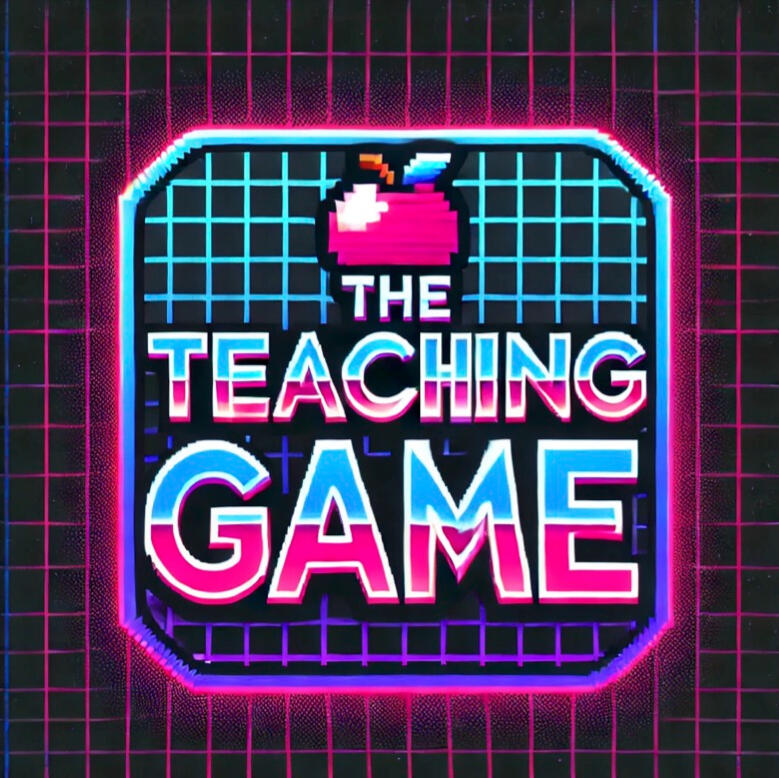
eBook
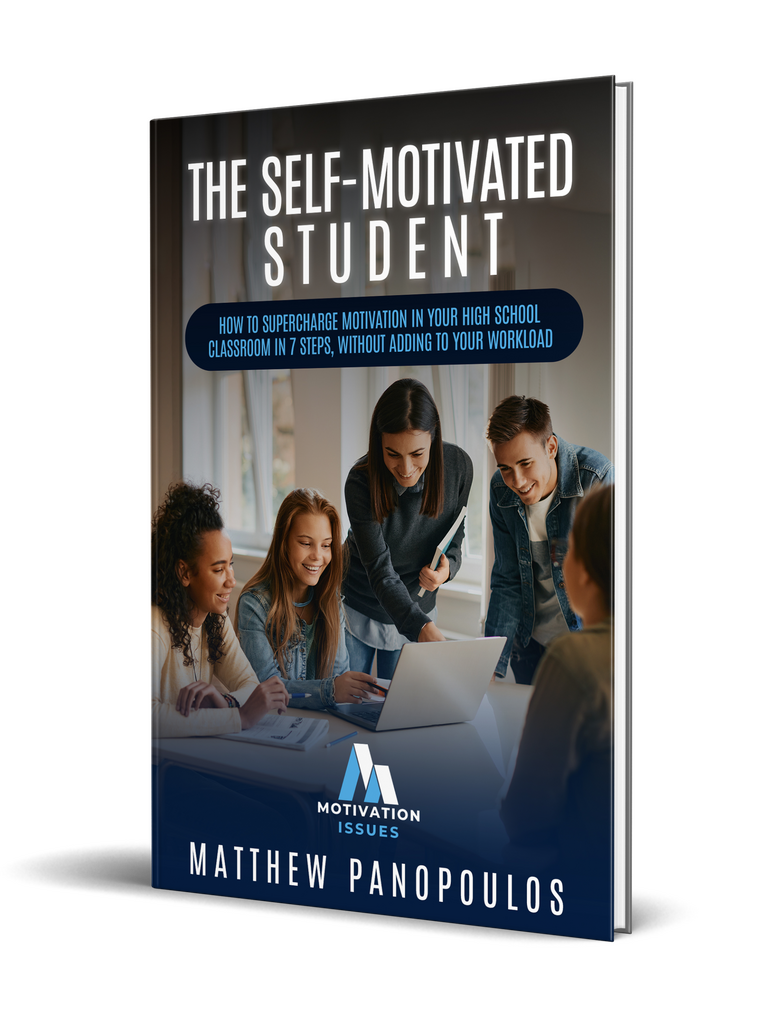
The Self-Motivated Student
Online Course

Empowering Self-Motivated Learners
Article Template
Author: Matt Panopoulos
Timing: ## minute read.

Placeholder text - hopefully this works.
Why is Student Behaviour So Awful in Australia?
Author: Matt Panopoulos
Timing: 9 minute read.
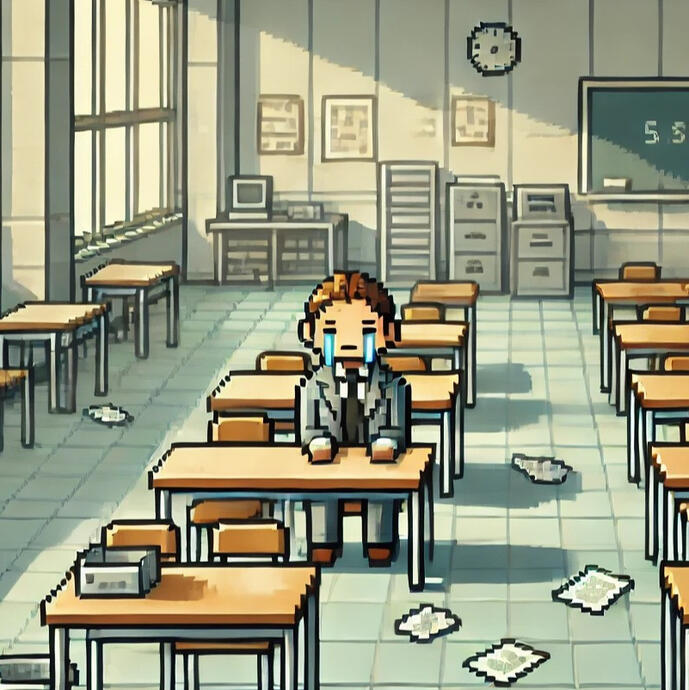
In over ten years of teaching, I still don’t get it. I have theories of course - if you jump into my brain, you’ll find that I have a hard time switching off my own imagination and, I’ll be honest, my sometimes over-confident ego.Yet after years of informal discussion and listening to leaders from schools, universities, and government, I still don’t have a real answer.Why are students in Australia so poorly behaved?Let alone some of the most poorly behaved in the world - according to the OECD, 69th out of 76 countries?!For some very brief context, my own journey of tackling this question has involved working for different lengths of time in both public and private schools on the South Coast of New South Wales, as well as consulting and offering intensive workshops to students in Sydney and regional public schools around the state.In this time, while it definitely hasn’t been all bad (I do still love being a teacher, after all), those squeaky wheels that kill the buzz in your classroom can be an almighty pain - as every teacher reading and listening to this right now would know all too well.So, what now?Since I’ve already admitted that there isn’t an answer, instead I’m going to offer the following three things:
My own theory about the root causes of our sucky behavioural climate.
Some credible support for this theory, to help you make up your own mind balancing data against your own experience.
Most importantly - a Cheat Code to help anyone struggling with this issue.
#1 Root cause of the problem
I’ll rip the band-aid off here - we don’t really talk about why students behave so poorly.By this, I mean that compared to things like NAPLAN, HSC results, teacher attrition rates - we don’t have nearly as much real data and the consequences of student behaviour in Australia are underplayed and swept under the rug by comparison.So, ironically, my theory about the root cause of our awful behavioural culture is a lack of conversation about the root cause.Sceptical? Good. Hear me out.First, to prepare for this I read ten different articles about the impending National Behaviour Curriculum being rolled based on the recent Senate inquiry. I sourced these articles from six different news providers, and the following was the most substantial discussion point about Australia’s poor behavioural culture:
Yet, like much in education, concern about behaviour has been all too often dismissed by many in the sector.
This came from Glenn Fahey, a research fellow at the Centre for Independent Studies:Instead, the articles that I read focused on standard tropes such as “teachers need to be retrained,” “traditional methods need to be embraced,” and “we need explicit teaching.”And when I broached it with colleagues, a lot of the discussion quickly became anecdotal. You can see where this one is going from a mile off, I’m sure.“Back in my day…..”And this is what you see. When we are discussing poor student behaviour and its consequences, or lack thereof, anecdotes swoop in like a vulture on roadkill and quickly dominate the conversation.Do these sound familiar:“I never would’ve dared swear in front of a teacher….”“My parents would’ve crucified me….”"These soft kids, we used to get the cane!"“If that kid were in my year, they would’ve been expelled!”And, ultimately, Glenn Fahey’s earlier point rings true - the competing anecdotal noise gets talked down and, to put my cynical cap on for a moment, we get another Gonski reform and catapult more iPads into classrooms - so, at least Apple always wins.Aaaaaand I’ll take that cynical cap off now, lest the rant of no return gets too much steam.Instead, let’s jump ahead of the problem and really talk about what’s happening using data taken from real Australian classrooms.
#2 Supporting the Theory
According to the aforementioned OECD study, the main disruptions driving Australian teachers away from the industry include:
Noise and disorder, to the point of interrupting the lesson entirely
Students not listening to teachers, as in missing what they say completely
Students not working well, being disengaged in their learning
Late arrivals, interrupting lesson flow and disrupting their peers
This same study has identified causal links between the above behaviours and gradual decline in engagement for both the perpetrators and those around them, meaning the squeaky wheels are bringing everyone down. Or:
Every disruption will likely have a ripple effect on student success for that cohort.
Now, I mentioned earlier that our Senate response to Australia’s classroom behaviour culture is putting the lens on retraining teachers in “traditional methods” - so, arming them to better do their jobs. Let’s lean on data about how well Australian teachers are currently doing:
At the close of 2024, over 2400 WorkCover claims have come through as a result of both mental and physical attacks from students
Teachers in Australia are losing on average 15% of their instructional time to managing disruptions [roughly 30 days of lost time] (PISA)
40% of teachers leaving early in their careers cite student behaviour as the reason, with students driving 41% of teacher stress (Australian Education Union)
Only 72% of teachers feel supported in enacting disciplinary measures (TALIS)
Less than 14% of teachers feel their workload is manageable (Monash University)
25% of classroom teachers do not feel safe from student and parent abuse (QTU)
A cursory look at these statistics would make a terrible advertisement for new teachers to plug the teaching shortage in Australia.And, evidently, teachers have plenty of time and cognitive resources to bear the weight of responsibility for ‘fixing’ our classroom behavioural culture.So, why is it that the Government and media discourse always seems to default to, without ever saying it explicitly, “teachers need to do their jobs better”?It’s because we don’t discuss the core issue properly.Much of the data that I have just presented has been brewing for over a decade, with Covid serving as extra fuel to the fire, not the match spark itself. Even before Covid, teachers and leaders were railing up against:
Persistent deficiencies in literacy and numeracy - with students pushed through anyway
A lack of explicit training for pre-service teachers on the realities, complexities, and red-tape of classroom management
Family stress
Student exposure to violence and substances
Social media and insidious device use, such as teacher baiting
And with the heaping dumpster fire that is education institutions grappling against our new AI reality, I’d put forward a part two for my theory.We don’t really talk about why students behave so poorly - and this is not okay.Sweeping issues under the rug doesn’t get rid of them, and that physically abused teacher in regional Western Australia is going to work every day either way - so more needs to be done.And putting teachers first is the logical step, as one happy teacher will give you one hundred happy kids.Since we all know that our Government won’t present a neatly-wrapped, catch-all solution tomorrow, I’m going to invite you on a short quest with me to take back some of the initiative for yourself.So, since everything about how I structure the Teaching Game gives away my nerdy love of everything video games, let’s talk Cheat Codes - or, ways to bypass the ‘normal’ rules to get you a higher score in your teaching life. And make sure to follow until the end for a little bonus.
CHEAT CODE:
Getting creative with Temporary Removal
We’re going to look at a proactive option for keeping you, teaching staff, safe and able to carry out your role. My focus is to keep these cheat codes high-impact, so we’re going brief here for actionability.So what on earth is temporary removal? It is a catch-all term for any action that gets a student out of your classroom - from a five-minute exclusion to suspension, and everything in-between.I see many teachers who err away from this method, citing reasons as catching up the student later, kickback from parents, and moving them unsupervised as legitimate headaches, so they grit their teeth and soldier on as it seems unviable or just straight-up not worth the hassle - and I feel you on that.This is where we can get creative.Picture that one kid that soaks up all of your time just because they want to - calling out, being rude, late, hassling other students, whatever your flavour - and now fantasise them leaving your classroom the moment they cross the line.Got more than one? A whole gaggle? Then picture them waddling out together like geese.You can probably already hear the complaint of “but you can’t exclude my child from their learning, that’s not fair!” It’s also not fair for their child to exclude other kids from learning, so you’ll need to suck it up and take that one, parent or guardian - it’s your kid’s fault.Now, it doesn’t always play out this way, and often a whinging parent is the most powerful force on earth - so let’s frame our most important Cheat Code question:
How can we build a system to get unsafe behaviour out of our classroom?
Notice the intentionally solution-focused language in that question - How. Can. We.Also, I say system, so that we have a reliable method to lean-on instead of creating more work by removing disruptions.Pause here for a moment to reflect on how disruptive your average teaching day is. Think about what support you have or don’t have, which part of your days are hardest to manage, and how discipline usually plays out.Now that you have that image nice and clear, we can lean on the system. What does your school policy have, in writing, to keep students accountable? Do the students and parents explicitly know all of it, and how well is it followed through?For example, here is a NSW Education excerpt:
Time-Out: This strategy involves temporarily removing a student from their regular classroom setting to a designated area where they can reflect on their behavior under supervision. Time-out is used to de-escalate situations and provide students with an opportunity to regain composure before rejoining the class.
If this is new to you, can a system like this be deferred to for immediate, highly-structured action? Can you present it with accessible language as a condition of entry for your classroom, so that students know and agree to being removed for the sake of others’ learning?Even though many contemporary pedagogical schools of thought would disagree, I want to put forward the following based on the over-fifty-years of research from the Self-Determination Theory of motivation.Self-Determination Theory (SDT) demonstrates that students thrive in structured behavioural frameworks when these frameworks satisfy their need for autonomy. Autonomy is supported by giving students choices and acknowledging their perspectives, even within rules. This approach promotes authentic engagement, self-regulation, and internalisation of values, leading to better behavioural outcomes and psychological wellbeing.High-structure, or an explicit set of black-and-white expectations, is important because it provides the necessary framework for students to feel competent and secure while navigating their autonomy. As demonstrated in a plethora of field studies, structure clarifies expectations, offers consistent guidance, and supplies feedback, which fosters a sense of competence. When students perceive the environment as supportive rather than chaotic, they are better able to internalise rules and still engage autonomously. This combination of structure and autonomy leads to more effective self-regulation and positive behavioural outcomes.So, if you haven’t yet got a clear set of rules or ‘laws’ for your room - what does the ideal set look like? How can you structure it to make your students understand that learning and safety come first and that, if this agreement is broken, they are out? Where will they go?And this is the really creative part of our Cheat Code - it’s your classroom, so you can experiment.
Need approval? Ask an ally above you for help.Got some parents you are worried about? Send them an email explaining how, for their child’s learning, this is the set of rules they’ll be following - don’t ask them, show them.And if you’ve already tried it without much success, how can you tweak it?Lastly, and of course not least, the reason we have to pose this Cheat Code as questions rather than me giving you a silver bullet is because kids are messy - and your context is unique. Your room is a combination of personalities, school culture, community culture, different learning needs, and your own teaching style.So if you have one key takeaway from reading or listening to this, here are your Cheat Code action steps.
CHEAT CODE:
Action Steps
Pause all other lesson plan and administration work - it will still be there later
Think about the system for behaviour that your class uses
Be honest with yourself - how well is it working?
Can it be more explicit to students, with a clear rationale for why you do it?
Who do you need to ask for help so that it will be followed through?
Are there some strategic parents to email?
Is your temporary removal space ready to go - if not, who do you need to talk to?
Now, I promised a bonus - I want to offer free input if you would find that helpful. All you have to do is jump to the ‘consulting’ tab on this website fill out the email form at the bottom of the page, and if you want to have fun you can copy and paste this into the message section:Help me Obi-Wan Kenobi, you’re my only hope!And to pump yourself up for this week, repeat after me:

I am a professional educator, I don’t need crap and I will not take it.
Reach out for help if you need it, keep up the good fight, and chase that high score for yourself - teaching should be fun for both us and the students, so let’s do what we need to make that happen.
Thanks for reading,
-Matt.
The Self-Motivation Series, Part 1:
Why Our Students Do What They Do
Author: Matt Panopoulos
Timing: 6 minute read.

Welcome to another article in our quest to get the high score for our Teaching Game!
So....
Ever wonder why that kid won’t stop tapping their pen?
It’s five minutes into a lesson, and Liam is already out of his seat. Again. He’s wandering around, mumbling about some YouTuber you’ve never heard of, while his classmates are trying to focus, and now you’ve lost the room.
Meanwhile, Emily is silent. But if you glance at her screen, it’s clear her "research project" has detoured into the depths of Tetris - again.
Then there’s Max, whose entire personality seems to revolve around asking “Why do we even need to learn this?” every. Single. Time.
What gives? Why do our students act the way they do? To answer that, we’re going to delve into the three magic ingredients of human motivation—Competence, Autonomy, and Relatedness. Together, these form the heart of Self-Determination Theory (SDT). And no, it’s not just another academic buzzword; it’s a framework that could change the way you approach teaching.
So read on, and, as always, expect some nerdy video game references!

Competence, Autonomy, and Relatedness: The Triforce of Motivation
Let’s translate some psychology into plain English.
SDT is a broad framework for the study of human motivation and personality which has its origin in research beginning in the 1960s by two academics, Edward Deci and Richard Ryan. It is an organismic macro-theory, meaning that it is consistently evolving based on fieldwork from around the world, crossing into varied domains such as sport, corporate culture, and education. The benefit for those who would draw from this framework is that it has been subject to five decades of testing and refinement - so it has real academic rigour.
According to SDT, we humans have three psychological needs that drive our behaviour:
Competence – The need to feel capable and effective in what we do.
Autonomy – The need to feel like we have control over our choices.
Relatedness – The need to feel connected to others.
So, essentially, if we are given a task that is challenging yet achievable, with choice in how we do it and support if we want it, it isn’t too hard to find that internal drive and dive right in until the task is done.
Here’s how these three show up in the classroom:
Competence: Why Emily Tunes Out
Emily, the silent Tetris enthusiast, might not feel confident in her ability to succeed. Competence is like a game level—when it’s too hard or too easy, players lose interest. If Emily feels like the task is either impossible or beneath her, her brain checks out.
Autonomy: Why Max Questions Everything
Max’s never-ending “What’s the point?” questions might seem obnoxious, but it’s his way of expressing a lack of autonomy. When students feel forced into activities they have no say in, resistance follows. Think of it like being told you have to enjoy a game because it’s “good for you.” Spoiler: You probably won’t.
Relatedness: Why Liam Roams the Room
As for Liam, his constant interruptions might stem from unmet needs for connection. If he feels isolated or unvalued, he’ll seek attention any way he can. Sometimes, that means hijacking your lesson with tales of YouTuber drama so that he can feel that you are on his side.
The Payoff: Why Teachers Need to Know This Stuff
Once you understand SDT, the classroom starts making a whole lot more sense. Instead of seeing disruptions or disengagement as personal failures—or just “bad behaviour”—you’ll begin to see the unmet needs beneath the surface.
For example:
When you design tasks that balance challenge and skill, students feel more competent.
When you give students choices, even small ones, they feel more autonomous.
When you foster a sense of community, students feel more connected.
It’s not magic, but it might feel like it when you see the shift in student engagement. Changing gears to focus on meeting these needs in your lesson design is an absolute game-changer, and this article is the first in a series of four that will explore how to effectively shift your pedagogical focus to get significantly stronger student engagement in your classroom.
For our first Cheat Code to take with you today, we’re going to talk about the insidious nature of rewards.
Sceptical? Good - now hear me out.
CHEAT CODE:
Stop Using Stickers as Your Only Weapon
Okay, let’s talk about extrinsic motivators—those shiny carrots we dangle in front of students to get them to jump through hoops. Stickers, grades, rewards, chocolates, threats of detention… we’ve all been there.
Here’s the problem: They don’t work long-term.
SDT research (and common sense) shows that when kids rely solely on external rewards, their intrinsic motivation takes a nosedive. That’s because they start associating tasks with the reward, not the inherent satisfaction of doing them.
Real-World Example 1: The Sticker Spiral
You’ve got a student who aces their spelling tests every week—until one day, you forget to hand out the stickers. Suddenly, they’re not trying anymore. Why? Because they weren’t spelling for the joy of mastering language; they were spelling for stickers.
Real-World Example 2: The “Good Job” Trap
You heap praise on Liam for finally sitting still, hoping it’ll reinforce good behaviour. But next time, he’s bouncing off the walls again. Why? Because extrinsic motivators like praise are fleeting. They don’t satisfy deeper needs for autonomy or competence.
So, What’s the Cheat Code?
Focus on intrinsic rewards: Instead of stickers, try giving feedback like, “Your argument here is really persuasive—great work!” This emphasises the value of the work itself, with specificity for the student to take away with them.
Offer choices: “Do you want to work on this task alone or with a partner?” This small gesture supports autonomy.
Build connection: Use moments of off-topic conversation to strengthen relationships. “Liam, I’m curious—why is that YouTuber your favourite?”
If a reward system or ‘token economy’ as I was taught at University has been your go-to in classroom management, these ideas are going to feel weird and take time, so my encouragement is:
Stay in the saddle and ride it out, like a hero braving an epic quest.

It will get easier, your students will eventually get used to it as well, and - particularly under assessment pressure - they are going to be much happier knowing that your feedback has been deep, constructive, and relevant to their learning.
Funnily enough, when your students feel a love of learning they usually forget about other rewards.
Teaching for the Long Game
So, what is the takeaway here?
Students aren’t empty vessels that you can program with stickers and grades. They’re humans, navigating a world full of their own challenges and needs. By understanding Competence, Autonomy, and Relatedness, you’ll not only decode their behaviour—you’ll also equip them with the motivation to level up their own learning.
And who knows? Maybe next time, Liam will stay in his seat, Emily will stay on task, and Max will find his “why.” Well… two out of three isn’t bad.
Now, go forth and teach like the SDT-powered legend you are. And if all else fails, remember: you’re doing great.
As usual, I want to offer free input if you would find that helpful. All you have to do is jump to the ‘consulting’ tab on this website fill out the email form at the bottom of the page, and if you want to have fun you can copy and paste this into the message section:
Help me Obi-Wan Kenobi, you’re my only hope!
And to pump yourself up for this week, repeat after me:

Learning is its own reward, and I am a learning champion!
Reach out for help if you need it, keep up the good fight, and chase that high score for yourself - teaching should be fun for both us and the students, so let’s do what we need to make that happen.
Thanks for reading,
-Matt.
Why Video Games Are Always More Engaging Than Your Lessons - And What To Do About It.
Author: Matt Panopoulos
Timing: 5 minute read.
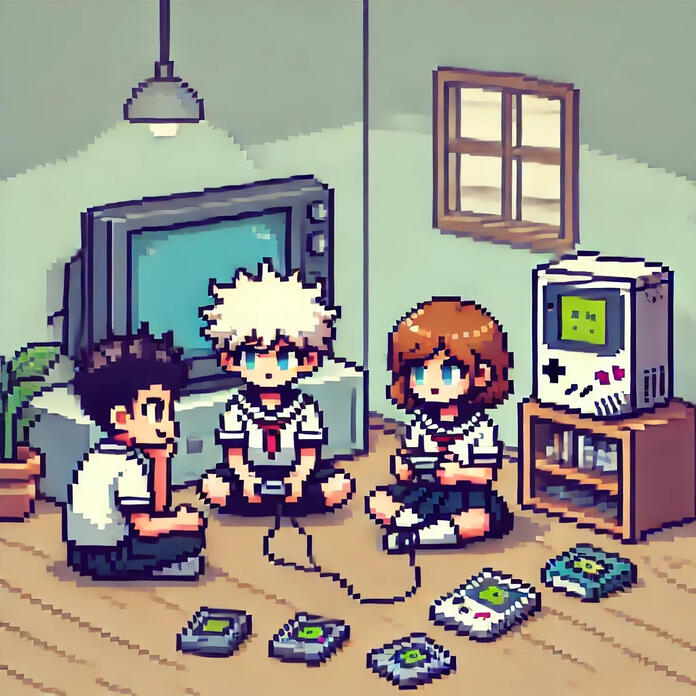
It’s Monday morning, and Chloe is hunched over her desk, sketching characters from her latest World of Warcraft obsession instead of solving equations. Across the room, Dylan is excitedly recounting how he beat a particularly tough dungeon boss over the weekend. You notice Mia, usually quiet and disengaged, suddenly animated when discussing a Minecraft project she’s building with friends.
Why do video games ignite such passion and focus, while the quadratic formula seems to barely register?
It’s not because students are lazy or distracted—it’s because well-crafted video games are designed to satisfy three universal human needs:
Competence
Autonomy
Relatedness
These needs, outlined by Self-Determination Theory (SDT), are the secret sauce behind why video games captivate millions—and why applying similar principles can revolutionise your teaching.
The Core of Good Game Design
Self-Determination Theory (SDT) explains that motivation thrives when three psychological needs are met:
Competence – Feeling skilled and capable of overcoming challenges.
Autonomy – Having the freedom to make choices and direct your own actions.
Relatedness – Feeling connected to others and valued as part of a group.
Now, let’s connect these concepts to our students’ behaviours—both in the classroom and in front of a screen.
Competence: Why Dylan Prefers Game Bosses to Maths Problems
Video games are masters of the “Goldilocks challenge”—tasks that are neither too easy nor too hard. When Dylan defeated that difficult boss, the game provided immediate feedback (flashing "YOU WIN" text), which reinforced his sense of competence.
In contrast, Dylan’s math worksheet might not offer the same thrill. If the problems feel irrelevant or if success isn’t celebrated, his competence need goes unmet, leaving him unmotivated.
Autonomy: Why Chloe’s Game Story Feels More Important than Yours
Chloe loves games where her choices matter—what weapons to craft, what alliances to forge. This sense of control satisfies her autonomy need. In class, however, rigid instructions like “Everyone follow the same method!” leave her feeling constrained.
Relatedness: Why Mia Comes Alive Discussing Minecraft
Mia’s enthusiasm for Minecraft isn’t just about blocks; it’s about belonging. Collaborative gaming satisfies her need for relatedness, as she builds and explores virtual worlds with her friends. Traditional schoolwork often misses this opportunity to foster connections, leaving students feeling isolated.
What Teachers Can Learn from Game Designers
Game developers spend years refining systems to keep players engaged. While you might not have a team of coders at your disposal, you can still learn from their strategies. Here’s what games teach us about designing engaging classroom experiences:
Master the Feedback Loop: Games reward progress constantly—points, badges, new abilities. Apply this by offering regular, specific feedback on student efforts, rather than waiting for end-of-term grades. Note how this isn’t competitive between students - each student is competing only with themselves, and the teacher serves the role of the caring guide following each student through their learning quest.
Layered Challenges: Just like games introduce tutorials before throwing players into complex quests, structure lessons to build skills gradually. Let students “level up” through achievable challenges.
Meaningful Choices: In games, decisions have consequences, making them feel significant. In the classroom, offer students choices—what book to read, which project format to pursue. Keep rules and expectations clear and consistent so that students feel confident that they are making the right choice for them based on the challenge ahead.
By mimicking these principles, you tap into the psychological mechanisms that make gaming so irresistible.
So, instead of game designers having all the fun - how can you take them into your classroom?
Let's tackle that answer together with a Cheat Code!
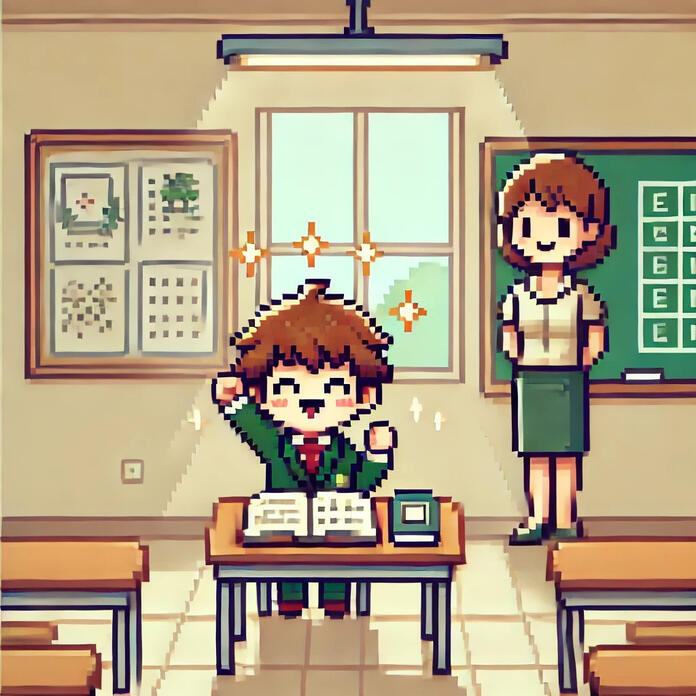
CHEAT CODE:
The “Level-Up System”
Here’s a simple, actionable strategy inspired by video games to try in your classroom. As always, tweak it to suit your class in whatever way you need:
What It Is:
Turn your classroom into a game by creating a “Level-Up System” for assignments, participation, and skill mastery.
How It Works:
Set the Stages: Divide tasks into levels (e.g., Level 1: Basics, Level 2: Intermediate, Level 3: Advanced).
Crystal Clear Boundaries: Explain all of the structure, guidelines, and Do-Not-Do’s clearly so all students know the rules of the game - it makes it easy for them to immerse themselves.
Visual Progress: Use a leaderboard, digital tracker, or posters where students can track their progress.
Rewards that Matter: Replace extrinsic rewards (like stickers) with privileges tied to autonomy, such as choosing their next challenge or collaborating on a group project.
Celebrate Wins: When students complete a level, acknowledge it with fanfare—think verbal praise, a certificate, or even a simple “Level Up!” shout-out with a crisp high-five.
Example in Action:
In an English class, students might “level up” by demonstrating mastery over writing techniques:
Level 1: Write a simple paragraph.
Level 2: Incorporate figurative language.
Level 3: Develop a full narrative.
This system satisfies competence (clear goals and progression), autonomy (choice of tasks), and relatedness (shared excitement when classmates level up).
Press Start to Engage
When students spend hours immersed in games, they’re not escaping reality—they’re stepping into environments that meet their psychological needs in ways reality often doesn’t. As educators, we can bring those lessons into the classroom with a little bit of creativity and planning.
By satisfying Competence, Autonomy, and Relatedness, you can transform lessons from something students endure to something they genuinely enjoy. So the next time Dylan won’t stop talking about his latest gaming conquest, don’t roll your eyes—take notes. The classroom isn’t a game, but with a few tweaks, it could be just as engaging.
As usual, I want to offer free input if you would find that helpful. All you have to do is jump to the ‘consulting’ tab on this website fill out the email form at the bottom of the page, and if you want to have fun you can copy and paste this into the message section:
Help me Obi-Wan Kenobi, you’re my only hope!
And to pump yourself up for this week, repeat after me:

Time to level-up my classroom - game on!
And as always: teaching isn’t about controlling the narrative—it’s about helping students find their own.
Now, go forth and gameify your teaching. The future high scores of education are yours to unlock!
Thanks for reading,
-Matt.
The Self-Motivation Series, Part 2: Competence And Focus In The Classroom
Author: Matt Panopoulos
Timing: 6 minute read.
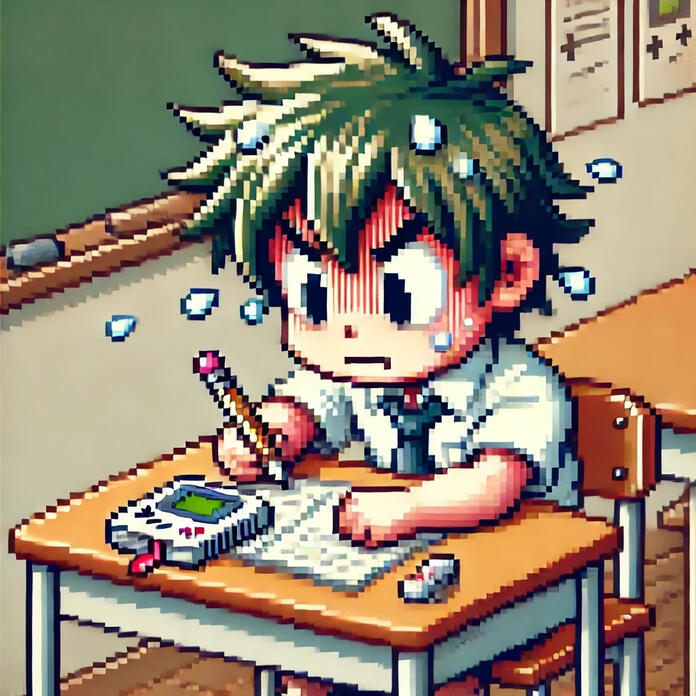
Welcome Back, Motivation Adventurers!
If you joined us for Part 1 of this series, you’ll recall our deep dive into why students behave the way they do, exploring the psychological needs behind their actions. Today, we’re levelling up to focus on one of the most powerful motivators: Competence.
Competence isn’t just about “being good at stuff.” It’s a cornerstone of motivation, learning, and psychological wellbeing, as outlined in Ryan & Deci’s Self-Determination Theory (SDT). And for teachers, understanding the nuances of competence is like unlocking a legendary weapon—one that can transform disengaged, disruptive classrooms into hubs of mastery and growth.
What is Competence?
In SDT, competence is the need to feel effective, capable, and skilled in handling tasks and challenges. When we feel competent, we’re motivated to tackle more complex challenges and experience the joy of mastery. It’s not about perfection; it’s about progress.
Competence thrives when tasks hit the sweet spot—challenging enough to be engaging but achievable with effort. Think of it like a well-designed video game: the early levels are easy enough to build confidence, but as you progress, the difficulty ramps up, keeping you hooked.
Contrary to what many think, the context is often irrelevant when considering our need to feel adequately challenged. Some people use their workplace to keep them growing in their skills, while others lean on their hobbies such as woodcrafting, painting, sewing, or writing.
Bill Gates famously shuts out external noise and pressure by pushing himself to develop more efficient ways to do the dishes; so, even chores in the kitchen can drive intrinsic motivation.
Here are some more specific examples across different industries, taken from over five decades of international field research in SDT.
1. Video Games: The Feedback Loop of Mastery
Good video games are built around competence. Players start with basic tutorials, learning essential mechanics through immediate feedback—whether it’s a glowing “YOU WIN!” or a satisfying upgrade. Each level builds on the last, introducing new challenges that feel achievable with the skills developed.
Teaching Parallel: In the classroom, students need “tutorials” (clear instructions) and “levels” (incrementally challenging tasks) with immediate feedback to feel they’re progressing. A worksheet dumped in front of them without explanation? That’s the equivalent of dropping a player into a boss battle with no prior gameplay - and often a recipe for quick disengagement or, as gamers say, “rage quitting.”
2. Sports: The Thrill of Incremental Growth
Athletes often describe the rush of mastering a new skill—like nailing a perfect serve or breaking a personal record. Coaches use feedback, drills, and encouragement to keep players striving.
Teaching Parallel: Scaffolded lessons allow students to tackle small, achievable steps, building towards mastery. Think of it as coaching students through the “mini-games” of learning.
3. Corporate Settings: Competence in the Workplace
In corporate training, employees thrive when tasks align with their skill levels and they receive constructive feedback. A lack of challenge leads to boredom, while tasks that feel impossible lead to burnout.
Teaching Parallel: Avoid both extremes. If a task feels too easy or impossibly hard, students will disengage. Find that balance to keep them in their “learning zone.”
4. Education: The Gold Standard
Research on SDT in education has repeatedly shown that students are most motivated when they feel competent. Feedback, structured support, clear guidelines, and opportunities to demonstrate learning are critical to fostering this sense of competence.
Understanding competence doesn’t just help students—it transforms teaching. Here’s why it matters:
Boosts Student Engagement: When students feel competent, they’re more likely to engage with lessons and persist through challenges.
Reduces Behavioural Issues: Frustration often stems from feeling incapable. When students believe they can succeed, classroom disruptions decrease.
Fosters Lifelong Learning: Competence builds confidence, creating a ripple effect. Students who believe in their ability to learn will carry that belief far beyond your classroom.
What NOT to Do:
Avoiding Competence Killers in the Classroom
Before we dive into the Cheat Code for this article, let’s pause and highlight some common pitfalls that can unintentionally undermine a student’s sense of competence. Avoid these common mistakes, and you’ll be one step closer to fostering confident, engaged learners:
Throwing Students into the Deep End Too Soon: Starting with tasks that are overly complex or lack proper instruction can overwhelm students, leaving them frustrated and disengaged. Learning is a progression—build the foundation before adding the rooftop.
Overloading with Negative Feedback: While constructive criticism is vital, focusing only on what’s wrong without highlighting what’s right can crush confidence. Students need to know what they’re doing well to feel capable of improvement.
Comparing Students to Each Other: Publicly ranking or comparing students can create a toxic environment. Instead of fostering competence, it promotes feelings of inadequacy for those struggling and arrogance for high achievers.
Ignoring Effort: Praising only outcomes (e.g., “You got an A!”) rather than effort (e.g., “You worked really hard on that project!”) shifts the focus away from the process of learning. This teaches students to value results over growth, which undermines resilience.
Using Overly Generic Praise: Empty statements like “Good job!” lack specificity and fail to reinforce what students are actually doing well. Targeted, meaningful praise builds competence by reinforcing effective actions and strategies.
Allowing Chaos to Reign: A lack of structure in lessons can make tasks feel unpredictable and unachievable. Students need clarity and direction to navigate challenges effectively - too many people confuse giving autonomy with a lack of structure!
By steering clear of these pitfalls, you create an environment where students can feel capable, supported, and ready to tackle challenges head-on.
And now, as usual, Cheat Code time!

CHEAT CODE:
The “User Journey” Approach
For a fresh perspective on fostering competence, let’s step outside the classroom and into the world of User Experience (UX) Design—the art of creating seamless, engaging digital experiences. In UX, designers map a "user journey," carefully crafting every step to guide users toward success while minimising frustration. Teachers can adopt this principle to design lessons that meet students where they are, anticipate their struggles, and lead them toward mastery.
What It Is:
A teaching strategy inspired by UX principles that treats each lesson as a curated experience, with the student as the “user.” The goal is to guide students through a carefully constructed journey that maximises their sense of competence while addressing potential obstacles before they derail progress.
1. Map the Journey:
Visualise the entire learning experience as a journey, breaking it into stages. Consider:
Onboarding: How do you introduce the concept in a way that hooks students and reduces anxiety?
Milestones: What are the key skills or checkpoints students need to reach along the way?
Endgame: What does success look like, and how will students know they’ve achieved it?
2. Create "Moments of Delight":
UX designers use small, unexpected rewards to keep users engaged (like confetti animations when you hit a goal in an app). In teaching, this might mean incorporating surprising, joyful moments—like a gamified quiz or a real-world application that connects the lesson to students’ interests. These moments help students associate learning with positivity, reinforcing their sense of competence.
3. Anticipate Friction Points:
Just as UX designers identify where users might get confused or frustrated, teachers should predict where students might struggle. Preemptively build in supports, like:
Clear instructions for complex tasks.
Quick-reference guides or visual aids for tricky concepts.
Peer collaboration opportunities for social reinforcement.
4. Test and Iterate:
UX designers test prototypes with real users and refine based on feedback. Similarly, try piloting a lesson segment with a small group or during a revision session. Gather feedback from students about what worked and where they felt stuck, and use this to tweak your approach.
Example in Action:
In a science lesson on Newton’s Laws of Motion:
Onboarding: Start with a short, dramatic video of a rocket launch to grab attention and hint at the real-world relevance of the lesson.
Milestones: Break the lesson into three stages: observing motion, identifying forces, and applying the laws to predict outcomes.
Moments of Delight: Incorporate an interactive simulation where students adjust variables like mass and force to "launch" a virtual object successfully. Add celebratory animations when they get it right.
Anticipate Friction: Provide a visual cheat sheet summarising the three laws for quick reference during tasks. Pair students in groups to encourage discussion and peer support.
Test and Iterate: After the first lesson, ask students which parts were the most engaging and where they felt lost. Use this input to refine future lessons.
Why It Works:
The UX approach shifts the focus from simply delivering content to designing a holistic learning experience. By mapping the journey, creating engaging moments, and addressing obstacles proactively, you’ll foster an environment where students feel capable and excited to tackle challenges.
It’s an unconventional cheat code, but who wants their classroom to just be conventional, right?
The Competence Endgame
When you prioritise competence in your teaching, you’re not just helping students master skills—you’re helping them build confidence and a lifelong love of learning. By offering structured challenges, timely feedback, and opportunities for growth, you’re fostering the mindset that students need to succeed.
So, what’s next? Part 3 of our series will explore Autonomy, the second pillar of SDT, and how giving students more choice can unleash their inner motivators. Until then, remember:
Every student has the potential to master the “game” of learning. Your job is to equip them with the tools to succeed.
Now go forth, scaffold those lessons, and watch your students level up!
And, as always, if you need a strategy boost or just someone to talk through your classroom challenges, don’t hesitate to reach out. I’m here to help you crush your teaching goals—free of charge—no cheat codes required. All you have to do is jump to the ‘consulting’ tab on this website fill out the email form at the bottom of the page, and if you want to have fun you can copy and paste this into the message section:Help me Obi-Wan Kenobi, you’re my only hope!And to pump yourself up for this week, repeat after me:

I am a capable, confident, kick-ass educator - look out world!
Reach out for help if you need it, keep up the good fight, and chase that high score for yourself - teaching should be fun for both us and the students, so let’s do what we need to make that happen.
Thanks for reading,-Matt.
